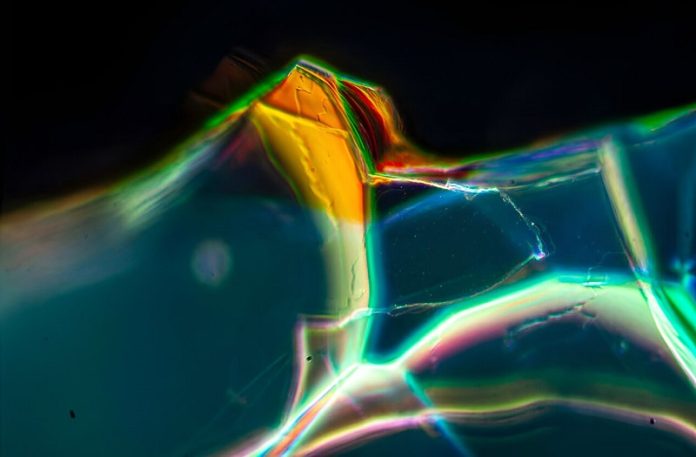
Have you ever wondered what happens to old, broken glass?
Two scientists at Tufts University made a groundbreaking discovery using a sparkling piece of ancient Roman glass.
This glass wasn’t just any ordinary shard; it had changed into something incredibly special over 2,000 years!
The glass was first made in ancient Rome. Imagine someone accidentally dropping a wine or perfume bottle in a marketplace.
Over time, these glass pieces got buried under dirt and forgotten. But nature was secretly working its magic.
Now, when these fragments are found during digging or construction, they surprise everyone with their beauty. They show dazzling colors like blue, green, and even gold!
Fiorenzo Omenetto and Giulia Guidetti, the experts who studied the glass, found that it had turned into what’s called a “photonic crystal.”
That’s a super-organized arrangement of tiny particles that plays with light in special ways. Today, photonic crystals are used in lots of advanced technologies, like ultra-fast internet and super-sneaky stealth devices.
So how did this amazing transformation happen? Well, the glass was affected by the soil it was in, the rain that fell, and even the shifting ground water. Over centuries, the elements in the glass rearranged themselves into an intricate structure.
These new structures, called “Bragg stacks,” are what give the glass its shiny gold look. It’s like the glass was going through a very, very slow makeover, and the result was dazzling!
What’s even cooler? This isn’t just a neat historical find. The scientists believe that if they can figure out how to speed up the process, they could “grow” these valuable materials in labs instead of having to make them from scratch. It could revolutionize how we make certain materials.
Just like the city of Rome itself, this glass went through many changes over time. Rome was built with long-lasting buildings, and the city has grown in layers for centuries.
Buildings fell, new ones were made, and the city kept changing. The glass also changed, right under the soil of the evolving city. It’s like a tiny piece of Rome’s history!
So the next time you see a piece of old, broken glass, think about the secret, beautiful changes it might be going through under the Earth. You never know, it might just turn into a modern-day marvel!
Follow us on Twitter for more articles about this topic.
Source: Tufts University.



